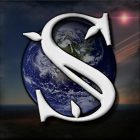|
Exoplanet News Thread
|
|
| Atmoscat | Date: Tuesday, 25.06.2013, 20:59 | Message # 136 |
 Astronaut
Group: Users
 Germany
Germany
Messages: 68
Status: Offline
| Three potential planets in habitable zone around Gliese 667C!
Space.com article
PC: Intel® Core™2 Duo Processor E8500 @ 3.16GHz, 3.25 GB / 4.00 GB DDR3 RAM, GeForce GTX750Ti 2048 MB VRAM, WinXP Home 32bit / Windows7Pro 64bit
|
| |
| |
| Watsisname | Date: Wednesday, 26.06.2013, 01:09 | Message # 137 |
 Galaxy Architect
Group: Global Moderators
 United States
United States
Messages: 2613
Status: Offline
| Gliese 667 is an awesome system. I chose 667Cc for a term paper in Astrobiology; it's one of the strongest candidates for life outside the solar system we yet know. 

|
| |
| |
| LiveLife42 | Date: Saturday, 29.06.2013, 06:34 | Message # 138 |
 Explorer
Group: Users
 United States
United States
Messages: 272
Status: Offline
| 3 Habitable planets hmm I wonder what a sunrise would look like. Well time to add it to SpaceEngine.
PC: Intel Core i7-3770K o/c 4.6 Ghz Quad Core, 16GB DDR3 o/c 1866 Mhz, EVGA GeForce 980Ti with 6GB VRAM
|
| |
| |
| HarbingerDawn | Date: Thursday, 11.07.2013, 22:09 | Message # 139 |
 Cosmic Curator
Group: Administrators
 United States
United States
Messages: 8717
Status: Offline
| HD 189733 b has been observed by Hubble to have a deep blue color; it is the first exoplanet to have its visible-light appearance determined in any way (as far as I know).
To change its appearance in SE, find the "HD 189733 b" entry in /catalogs/planets/ExoPlanets.sc and add the following to it:
Code Surface
{
colorSea (0.40, 0.40, 1.00, 0.00)
colorShelf (0.40, 0.40, 1.00, 0.00)
colorBeach (0.40, 0.40, 1.00, 0.00)
colorDesert (0.40, 0.40, 1.00, 0.00)
colorLowland (0.40, 0.40, 1.00, 0.00)
colorUpland (0.40, 0.40, 1.00, 0.00)
colorRock (0.40, 0.40, 1.00, 0.00)
}
Atmosphere
{
Height 500
Model "Neptune"
Bright 3.0
Opacity 0.2
SkyLight 5.0
}

All forum users, please read this!
My SE mods and addons
Phenom II X6 1090T 3.2 GHz, 16 GB DDR3 RAM, GTX 970 3584 MB VRAM
Edited by HarbingerDawn - Thursday, 11.07.2013, 23:57 |
| |
| |
| SpaceEngineer | Date: Thursday, 11.07.2013, 23:43 | Message # 140 |
 Author of Space Engine
Group: Administrators
 Russian Federation
Russian Federation
Messages: 4800
Status: Offline
| Quote (HarbingerDawn) To change its appearance in SE, find the "HD 189733 b" entry in /catalogs/planets/ExoPlanets.sc and add the following to it:
Screenshot? You may want also to add NoClouds true.

|
| |
| |
| HarbingerDawn | Date: Thursday, 11.07.2013, 23:47 | Message # 141 |
 Cosmic Curator
Group: Administrators
 United States
United States
Messages: 8717
Status: Offline
| Quote (SpaceEngineer) You may want also to add NoClouds true.
Changing the color parameters seems to prevent cloud generation, so it may not be necessary.
Quote (SpaceEngineer) Screenshot?
Ok I'll add one.
All forum users, please read this!
My SE mods and addons
Phenom II X6 1090T 3.2 GHz, 16 GB DDR3 RAM, GTX 970 3584 MB VRAM
|
| |
| |
| Salvo | Date: Tuesday, 22.10.2013, 17:40 | Message # 142 |
 Star Engineer
Group: Local Moderators
 Italy
Italy
Messages: 1400
Status: Offline
| 1000 confirmed exoplanets! Wohoo! 
The universe is not required to be in perfect harmony with human ambition.
CPU: Intel Core i7 4770 GPU: ASUS Radeon R9 270 RAM: 8 GBs
(still don't know why everyone is doing this...)
|
| |
| |
| imperion | Date: Sunday, 22.12.2013, 16:43 | Message # 143 |
 Observer
Group: Newbies
 Russian Federation
Russian Federation
Messages: 1
Status: Offline
| Two teams of scientists using the Wide Field Camera 3 aboard NASA’s Hubble Space Telescope have detected faint signatures of water in the atmospheres of five big exoplanets.
This is an artist's impression of a star's light illuminating the atmosphere of an exoplanet. Image credit: NASA's Goddard Space Flight Center.
This is an artist’s impression of a star’s light illuminating the atmosphere of an exoplanet. Image credit: NASA’s Goddard Space Flight Center.
The five exoplanets, WASP-17b, HD 209458b, WASP-12b, WASP-19b and XO-1b, are hot Jupiters, massive worlds that orbit close to their host stars.
Discovered in August 2009, WASP-17b orbits a main sequence star about 1,000 light-years away in the constellation Scorpius. The planet has an especially puffed-up atmosphere.
HD 209458b orbits a Sun-like star in the constellation Pegasus, about 150 light-years away. This exoplanet has the strongest signals of water.
The signatures for the other three planets, WASP-12b, WASP-19b and XO-1b, also are consistent with water.
Dr Avi Mandell of NASA’s Goddard Space Flight Center in Greenbelt, who is the lead author of the paper describing the WASP-12b, WASP-17b and WASP-19b findings in the Astrophysical Journal (arXiv.org), said: “we’re very confident that we see a water signature for multiple planets. This work really opens the door for comparing how much water is present in atmospheres on different kinds of exoplanets, for example hotter versus cooler ones.”
Dr Mandell with colleagues explored the details of absorption of light through atmospheres the five exoplanets. They compared the shapes and intensities of the absorption profiles, and the consistency of the signatures gave them confidence they saw water.
“To actually detect the atmosphere of an exoplanet is extraordinarily difficult. But we were able to pull out a very clear signal, and it is water,” said Dr Drake Deming of the University of Maryland in College Park, who is the lead author of the study on HD209458b and XO-1b published in the Astrophysical Journal (arXiv.org).
The water signals were all less pronounced than expected, and the astronomers suspect this is because a layer of haze or dust blankets each of the five planets. This haze can reduce the intensity of all signals from the atmosphere in the same way fog can make colors in a photograph appear muted. At the same time, haze alters the profiles of water signals and other important molecules in a distinctive way.
link http://www.sci-news.com/astrono....94.htmlAdded (22.12.2013, 19:43)
---------------------------------------------
Not the best  quote I will learn quote I will learn 
If that sorry for bad english
|
| |
| |
| Chris94 | Date: Wednesday, 08.01.2014, 03:21 | Message # 144 |
 Space Pilot
Group: Users
 Norway
Norway
Messages: 118
Status: Offline
| I don't know if this fits here, but there is a possibility that NASA's Kepler Space Telescope has discovered exomoons. Exomoons that are the size between Mars and Earth.
http://www.dailygalaxy.com/my_webl....ta.html
|
| |
| |
| Salvo | Date: Thursday, 09.01.2014, 19:53 | Message # 145 |
 Star Engineer
Group: Local Moderators
 Italy
Italy
Messages: 1400
Status: Offline
| That's quiote old, unfortunately Exomoons are very hard to spot, and I don't think we'll confirm any in near future, interesting article btw 
The universe is not required to be in perfect harmony with human ambition.
CPU: Intel Core i7 4770 GPU: ASUS Radeon R9 270 RAM: 8 GBs
(still don't know why everyone is doing this...)
|
| |
| |
| Chris94 | Date: Thursday, 09.01.2014, 20:41 | Message # 146 |
 Space Pilot
Group: Users
 Norway
Norway
Messages: 118
Status: Offline
| Quote Salvo (  ) That's quiote old, unfortunately Exomoons are very hard to spot, and I don't think we'll confirm any in near future, interesting article btw
I know it's an old article, but i didn't saw it located anywhere on the forum, and no news about exomoons either.
We will just wait and see if NASA will later in some years confirm the existence of exomoons.
|
| |
| |
| SpaceEngineer | Date: Thursday, 09.01.2014, 22:17 | Message # 147 |
 Author of Space Engine
Group: Administrators
 Russian Federation
Russian Federation
Messages: 4800
Status: Offline
| Why NASA? Not only NASA explores the space. There are a lot of observatories and astronomical institutions across the world.

|
| |
| |
| spacer | Date: Wednesday, 26.02.2014, 19:50 | Message # 148 |
 Star Engineer
Group: Users
 Israel
Israel
Messages: 1258
Status: Offline
| 715 new planets Announces!!! 
"we began as wanderers, and we are wanderers still"
-carl sagan
-space engine photographer
|
| |
| |
| Chris94 | Date: Wednesday, 26.02.2014, 19:52 | Message # 149 |
 Space Pilot
Group: Users
 Norway
Norway
Messages: 118
Status: Offline
| And 4 of them are Super-Earth planets located in the habitable zone 
Here's the link so everyone can see it: http://www.nasa.gov/ames....Cvl5PNl
The discussion is still ongoing: http://www.ustream.tv/channel/nasa-arc?rmalang=en_US
EDIT: The live stream is over now.
EDIT: Now it's time soon to add these new planets into the planetary catalogue for Space Engine 
I hope the new version 0.9.7.2 will come with it.
Edited by Chris94 - Wednesday, 26.02.2014, 19:56 |
| |
| |
| apenpaap | Date: Wednesday, 26.02.2014, 19:59 | Message # 150 |
 World Builder
Group: Users
 Antarctica
Antarctica
Messages: 1063
Status: Offline
| 
I occasionally stream at http://www.twitch.tv/magistermystax. Sometimes SE, sometimes other games.
|
| |
| |